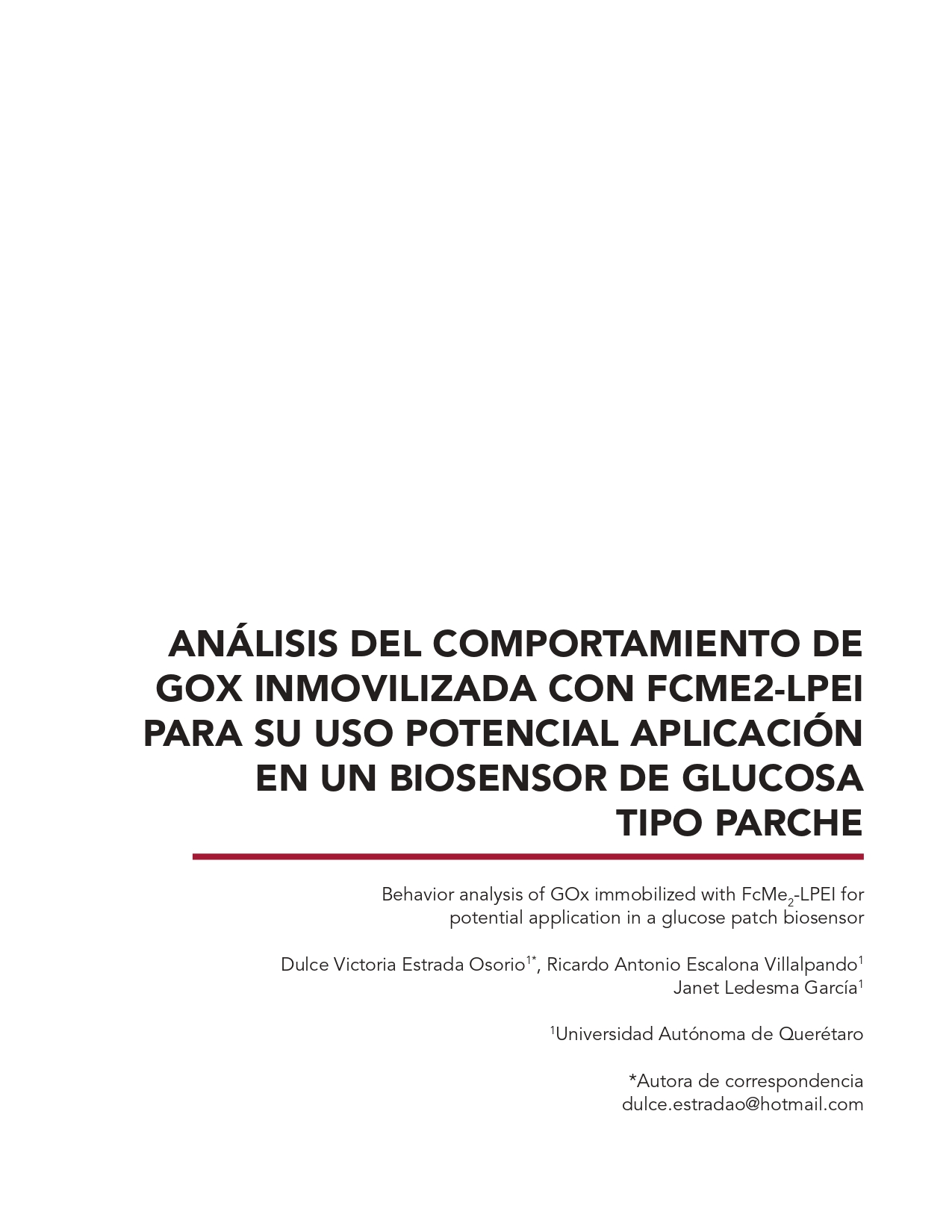Abstract
The immobilization process of the enzyme Glucose Oxidase (GOx) can modify the characteristics of the electrochemistry reaction of the enzyme, when it is immobilized with a redox polymer or electrochemical mediator it helps to enhance de electrochemical qualities of itself. The redox polymer used in this work was ferrocene-based (dimethylferrocene- modified linear polyethylenimine, FcMe2-LPEI) as bioanode and Glucose Oxidase. A model with three electrodes (counter electrode (carbon fibers (Sigracet®)), work
electrode (clean and FcMe2-LPEI/GOx) and reference electrode (Ag/AgCl)) to measure the potential difference generated in the redox reaction of the enzyme. The electrochemical reactions were performed in a Phosphate Buffer Solution (PBS) with pH 5.7, and the cyclic voltammetry (CV) were analyzed in a potential window of -0.2 to 0.3 E/V s Ag/AgCl with 150 mV/s. To obtain comparative signals, the experiments were performed in a clean electrode and later the FcMe2-LPEI/GOx electrode was analyzed, both experiments were under the same laboratory conditions (temperature 21°C ± 2°), pH conditions and potential conditions. It was observed an improvement in the characteristics in both processes (reduction and oxidation) of the work electrode with the immobilized enzyme with this modified polymer. In this work is reported the comparison between both analyzed devices to prove the increase in the qualities and to be tested in a patch biosensor later.

This work is licensed under a Creative Commons Attribution-NonCommercial 4.0 International License.

